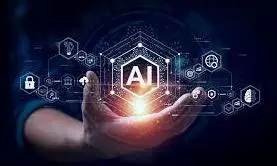AI makes coding easy, error-free
In a world where coding has seen thousands of syntax errors, sleepless nights and endless debugging, a new model is emerging.

Hyderabad:In a world where coding has seen thousands of syntax errors, sleepless nights and endless debugging, a new model is emerging. One that feels more like a conversation, than a craft.
Enter ‘vibe coding,’ the breakthrough in AI-assisted development, where large language model (LLM) platforms like DeepSeek and ChatGPT can write code with little more than a nudge from the user.
The process is more intuitive than generic coding, almost as if one is collaborating with a digital co-pilot that understands the essence of an idea and transforms it into a functional website.
Having experimented with this approach, this reporter found that AI was not just assisting with coding, it was doing all the heavy lifting. Well, almost.
The journey began with an idea. Instead of typing out HTML, CSS, and JavaScript, this reporter described what he wanted — a sleek portfolio website with a minimalist design and an interactive elements section.
With ChatGPT, the responses were very conversational; it took the vision and translated it into a fully functional front-end. The design was complete, but the menu placement was askew, and despite multiple attempts, the code was never able to connect the webpages to the buttons.
DeepSeek, on the other hand, had a similar yet different experience. The LLM was very descriptive, and gave a lot of advantageous tips while conversing. It also took the process a step further, by optimising the code multiple times throughout the prompts, and ensured seamless integrations with backend functionalities.
With both ChatGPT and DeepSeek, one was able to create a website within minutes that was simple yet aesthetically pleasing and technically sound, all without writing a single line of code.
The fascinating aspect of vibe coding is how it shifts the developer’s role from a coder to a curator of ideas. Instead of being limited by technical aspects, users can shift their focus towards refining their ideas, playing with designs and experimenting with new features.
This approach makes web development more accessible. It allows designers, writers, and entrepreneurs to build web platforms without needing to master or even learn programming languages. But it doesn't remove developers from the picture either.
For experienced developers, AI helps speed up projects, while leaving room for customisation and fine-tuning where necessary.
P. Chandrakanth, an AI-based start-up CEO, said “We’re in a future where natural language models are driving software development. AI is no longer just a tool; it’s a creative partner.”
However, it isn’t smooth sailing for creating platforms through AI-based development coding. The codes outputted by the LLMs are not perfect, they fail multiple times. The code written by ChatGPT in Python, and DeepSeek in Javascript had errors, and took multiple iterations to clear up.
Additionally, questions come up about intellectual property of the output. Who owns AI-generated code? Many enthusiasts debate about the authorship and ownership of code written by AI.
"Any AI needs a lot of data for it to understand and bring out solutions for users. And many debate about its legal and ethical standards. There are even lawsuits against the big names of AI developing corporations", Chandrakanth said.
Despite the challenges, the future of vibe coding looks promising. The sphere of AI continues to evolve, with the boundary between human creativity and machine execution blurring.

